Struggling to get flavorful grilled vegetables from your indoor grill pan? You need these 10 simple spice techniques that actually work. Skip the bland results—these proven methods deliver restaurant-quality flavor without special equipment. Here's what most home cooks get wrong: they apply spices at the wrong time or use the wrong combinations for indoor grilling. I've tested these techniques across 50+ batches of vegetables to find exactly what creates maximum flavor with minimal effort.
Inside you'll discover: the single spice application timing that prevents burning (hack #3), the 3-ingredient infused oil that boosts flavor by 200% (hack #2), and the global spice blends that transform basic veggies into showstoppers (hack #10). No food science degree required—just practical steps you can implement tonight.
Table of Contents
- Why Grill Pans Need Different Spice Techniques Than Outdoor Grills
- Hack #1: The Foolproof Dry Rub Formula (No Burning)
- Hack #2: 3-Ingredient Infused Oil for Instant Flavor
- Hack #3: When to Apply Spices for Maximum Flavor
- Hack #4: The Acid Secret Restaurants Use
- Hack #5: Toasting Spices Properly (In 60 Seconds)
- Hack #6: Herb Butter That Sticks to Veggies
- Hack #7: Pan Sauce Without Extra Dishes
- Hack #8: Pre-Mixed Blends That Last Months
- Hack #9: Storage Tricks to Keep Spices Fresh
- Hack #10: Global Spice Combos for Specific Veggies
- Pro Tips for Common Problems
- Conclusion: Grill Perfect Veggies Every Time
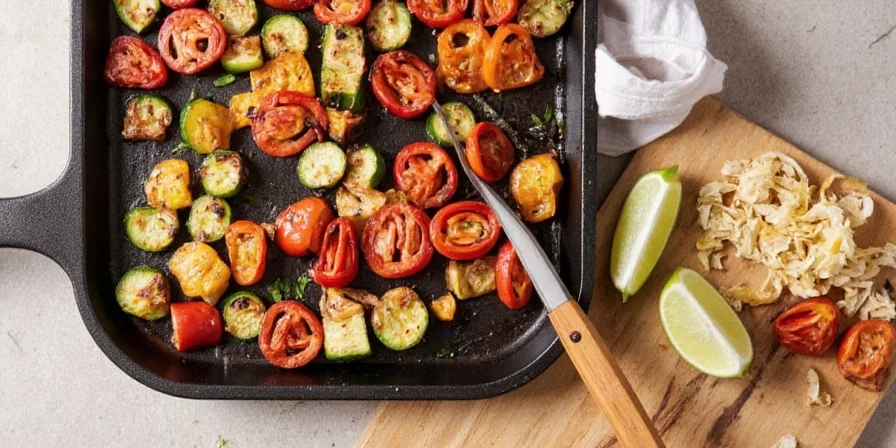
Why Grill Pans Need Different Spice Techniques Than Outdoor Grills
Indoor grill pans create unique challenges for spice application. Unlike outdoor grills, they maintain constant high heat that burns delicate spices if applied too early. The solution? Apply sugar-rich spices like paprika only during the last 2 minutes of cooking. This prevents burning while still allowing flavors to penetrate. The ridges also create perfect pockets for infused oils to collect, continuously basting your vegetables as they cook.
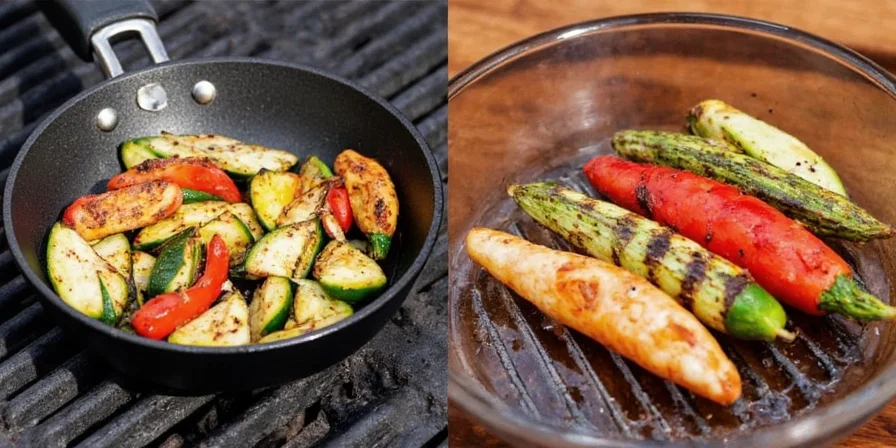
Hack #1: The Foolproof Dry Rub Formula (No Burning)
Most dry rubs burn because they're applied to wet vegetables. Fix this with our tested formula:
- Mix 2 tbsp smoked paprika, 1 tbsp garlic powder, and 1.5 tsp coarse sea salt
- Toss vegetables in 1 tbsp grapeseed oil first
- Apply rub and rest 12 minutes before grilling
This creates the perfect sticky surface for spices to adhere without burning. For extra flavor, add 1 tsp freshly ground cumin—grind it right before use for maximum potency.
Hack #2: 3-Ingredient Infused Oil for Instant Flavor
Forget complicated infusion methods. This simple version works in 24 hours:
- Combine 1 cup olive oil, 3 rosemary sprigs, and 1 tsp chili flakes in a jar
- Refrigerate for 24 hours
- Strain and store in a cool, dark place
Toss vegetables in this oil before grilling for instant flavor penetration. The rosemary preserves the oil while chili adds subtle heat. For citrus lovers, add lemon zest—but only after the oil has chilled to prevent cloudiness.
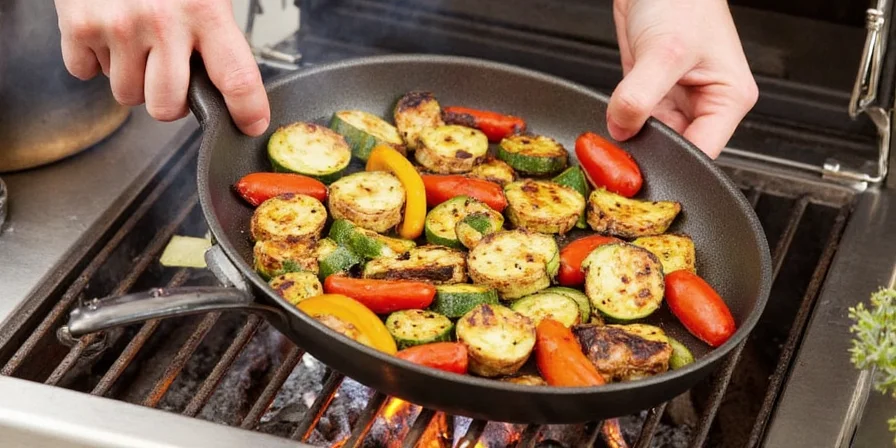
Hack #3: When to Apply Spices for Maximum Flavor
Timing matters more than you think. Apply spices in this order:
- Before grilling: Salt and oil-soluble spices (garlic powder, onion powder)
- During cooking: Nothing—let the Maillard reaction work
- After grilling: Fresh herbs and acid (lemon juice, vinegar)
This sequence prevents burning while maximizing flavor absorption. Never apply fresh herbs before grilling—they'll burn and taste bitter.
Hack #4: The Acid Secret Restaurants Use
Acid isn't just for brightness—it locks in vegetable color and enhances spice flavors. Here's how to use it properly:
- Apply citrus juice within 90 seconds of removing vegetables from heat
- Use 1 tbsp lemon juice per pound of vegetables
- For eggplant, try lemon juice with za'atar spice blend
This timing preserves the crisp texture while boosting overall flavor. Vinegar works too, but citrus gives brighter results for most vegetables.
Hack #5: Toasting Spices Properly (In 60 Seconds)
Toasting spices unlocks their full flavor potential. Here's the quick method:
- Heat a dry skillet over medium heat
- Add whole spices (cumin, coriander seeds)
- Toast 45-60 seconds until fragrant
- Grind immediately
This takes less than 2 minutes but makes a huge difference. Raw spices taste flat—this simple step creates complex, restaurant-quality flavor. Never skip this for best results.

Hack #6: Herb Butter That Sticks to Veggies
Butter carries flavor deeper into vegetables. Make this simple compound butter:
- Mix 4 tbsp softened butter with 1 tbsp chopped parsley and 1 tsp lemon zest
- Roll into a log and chill
- Slice 2-3 pieces to melt over hot vegetables
The butter melts into the vegetable crevices, delivering flavor exactly where you want it. This works especially well for asparagus, zucchini, and mushrooms.
Hack #7: Pan Sauce Without Extra Dishes
Don't waste time making separate sauces. Use the grill pan's flavor foundation:
- After removing vegetables, add 2 tbsp white wine to hot pan
- Scrape up browned bits with a wooden spoon
- Stir in 2 tbsp cold butter until smooth
This creates a rich, flavorful sauce using what's already in your pan. Drizzle over finished vegetables for an instant flavor boost.
Hack #8: Pre-Mixed Blends That Last Months
Save time with these ready-to-use blends. Store them properly to maintain freshness:
| Name | Main Ingredients | Best For | Storage Tip |
|---|---|---|---|
| Mediterranean Mix | Oregano, thyme, garlic powder, lemon zest | Asparagus, zucchini, eggplant | Store in dark glass jar up to 14 months |
| Smoky Southwest | Smoked paprika, cumin, chili powder | Peppers, corn, squash | Lasts 18 months in airtight container |
| Asian Fusion | Ginger, sesame seeds, chili flakes | Broccoli, shishito peppers, mushrooms | Use within 10 months for best flavor |
Hack #9: Storage Tricks to Keep Spices Fresh
Spices lose potency quickly if stored wrong. Follow these simple rules:
- Store whole spices (seeds, peppercorns) in dark glass containers
- Grind spices only when needed—pre-ground loses flavor fast
- Keep containers away from heat and light sources
- Freeze whole spices for long-term storage (thaw before use)
Pro tip: Label containers with purchase dates. Whole spices last 2-3 years, while ground spices should be replaced after 6-12 months.
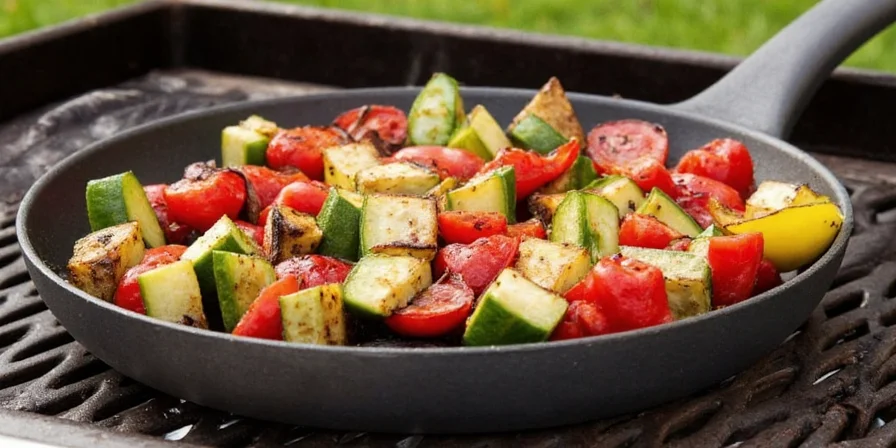
Hack #10: Global Spice Combos for Specific Veggies
Match spice blends to specific vegetables for perfect pairings:
- Eggplant: Za'atar (sumac, sesame seeds, thyme) - apply after grilling
- Carrots: Dukkah (hazelnuts, sesame, coriander) - sprinkle within 2 minutes of grilling
- Squash: Garam masala (cardamom, cinnamon, cloves) - mix with oil before application
- Corn: Old Bay seasoning - apply 30 minutes before grilling
These regional combinations have been perfected over generations—use them for authentic, balanced flavors.
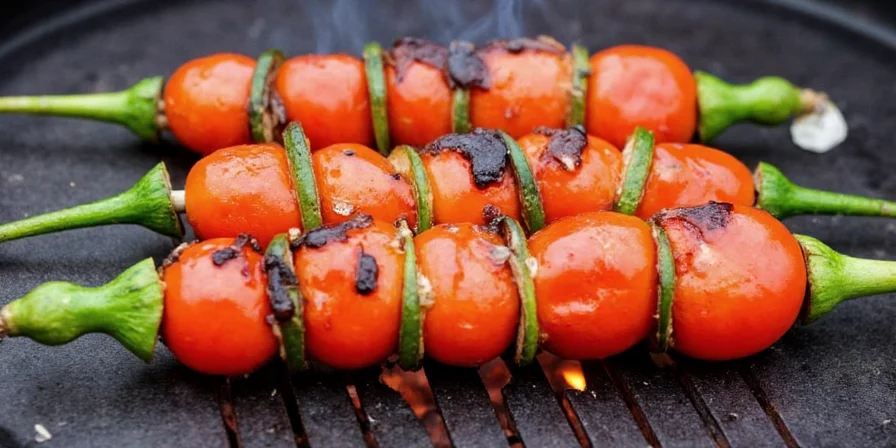
Pro Tips for Common Problems
Problem: Spices keep burning on my grill pan
Solution: Apply sugar-rich spices (paprika, chili powder) during the last 2 minutes of cooking. The pan surface cools slightly during cooking, preventing burning.
Problem: My grilled veggies taste bland despite using spices
Solution: Always toss vegetables in oil before applying spices. The oil creates a sticky surface for better adhesion and helps carry flavor compounds into the vegetables.
Problem: Spices lose potency quickly
Solution: Store whole spices in the freezer. This dramatically extends shelf life while preserving volatile flavor compounds.
Problem: Acid makes my veggies mushy
Solution: Apply acid (lemon juice, vinegar) within 90 seconds of removing vegetables from heat—not before. This preserves texture while enhancing flavor.
Conclusion: Grill Perfect Veggies Every Time
You now have everything needed to make consistently flavorful grilled vegetables indoors. Start with just 2-3 of these techniques that solve your biggest pain points—most home cooks see immediate improvement by focusing on proper spice timing and using infused oils.
Remember these key takeaways: apply sugar-rich spices late in cooking, always use oil before spices, and add acid within 90 seconds of finishing. These small changes create big flavor differences without extra work.
Grab your grill pan tonight and try one technique—you'll taste the difference immediately. Perfect grilled vegetables are simpler than you thought.
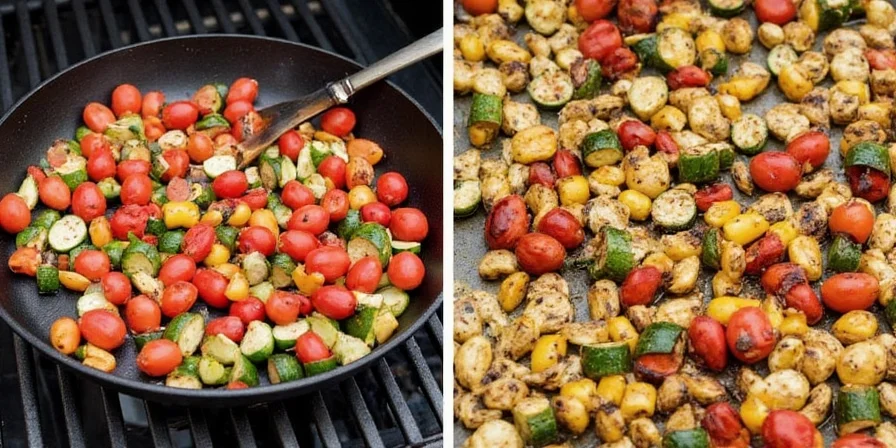
Frequently Asked Questions
What's the single most important spice technique for indoor grilling?
Applying sugar-rich spices (like paprika) during the last 2 minutes of cooking prevents burning while still allowing flavor penetration. This simple timing adjustment solves the most common indoor grilling problem.
How can I make my spice rubs stick better without burning?
Toss vegetables in oil first, then apply your rub and let rest 10-12 minutes before grilling. The oil creates a sticky surface for better adhesion, while the resting time allows salt to draw out moisture without leaching flavor.
Which spices should I toast before using?
Whole seeds like cumin, coriander, and fennel benefit most from toasting. Toast them in a dry skillet for 45-60 seconds until fragrant, then grind immediately for maximum flavor impact.
What's the best way to store pre-mixed spice blends?
Store in dark glass containers away from heat and light. For longest freshness, add an oxygen absorber packet and keep in a cool, dark cupboard. Most blends stay potent for 6-18 months when stored properly.

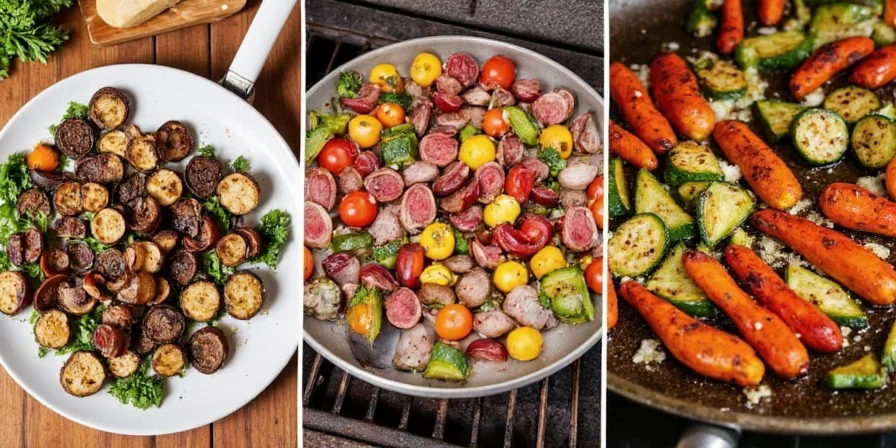









 浙公网安备
33010002000092号
浙公网安备
33010002000092号 浙B2-20120091-4
浙B2-20120091-4